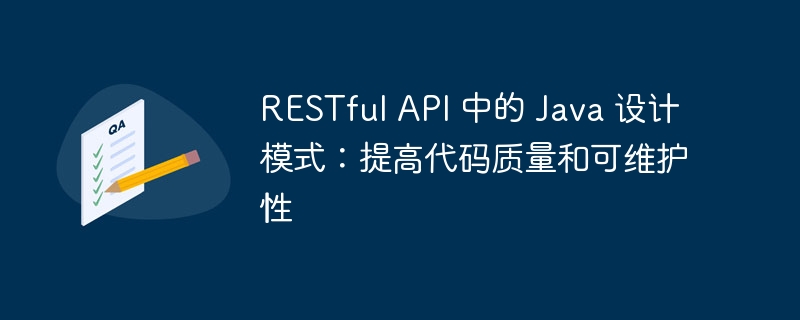
In today's Internet development, the RESTful API design pattern plays a crucial role. This article is carefully written by PHP editor Strawberry, and will deeply explore the Java design patterns in RESTful APIs, aiming to improve code quality and maintainability. By using appropriate design patterns, developers can better organize and manage code, improve system flexibility and scalability, and thus lay a solid foundation for successful project implementation. The voyage begins, let us explore the mysteries of the RESTful API design pattern together!
- Ensure that some classes in api (such as service layer) are only instantiated once.
- Provide a single point of access to shared resources to prevent concurrency issues.
Factory Method:
- Responsible for creating object instances of API endpoints.
- Provide flexibility and extensibility to the creation process, allowing endpoints to be easily added or modified.
Strategy:
- Separate the request processing algorithm from the client code.
- Allows processing methods to be switched according to different processing strategies to improve code reusability.
Observer pattern (Observer):
- Implement the event processing mechanism for request processing.
- When certain events occur in request processing, registered observer objects will be notified.
Adapter mode (Adapter):
- Allow incompatible classes or interfaces to work together.
- Provide a bridge between the API and external systems or legacy code to improve code reusability and maintainability.
MVC pattern (Model-View-Controller):
- Separate the business logic (model), view layer and controller layer of the API.
- Improve the maintainability of the code and allow different components to be modified independently.
Other modes:
-
REST Template (RestTemplate): Used to simplify RESTful API calls.
-
Spring MVC: Annotation-based framework for creating RESTful APIs.
-
Swagger: Used to generate API documentation and provide testing tools .
Benefits of using design patterns:
-
Improve code quality: Design pattern improves the readability, scalability and robustness of the code through encapsulation and decoupling.
-
Enhanced maintainability: Code created using design patterns is easier to understand, modify, and debug, thereby reducing maintenance costs.
-
Promote collaboration: Design patterns provide a consistent programming style, making it easier for team members to collaborate to develop and maintain APIs.
-
Improve reusability: Design patterns can be easily applied to other APIs or applications, saving development time and ensuring consistency.
-
Enhanced flexibility: Design patterns allow the behavior of the API to be easily changed according to business needs, improving the adaptability of the application.
In summary, adopting the RESTful API design pattern in Java can significantly improve code quality and maintainability, creating robust, flexible, and easy-to-maintain APIs.
The above is the detailed content of Java Design Patterns in RESTful APIs: Improving Code Quality and Maintainability. For more information, please follow other related articles on the PHP Chinese website!






